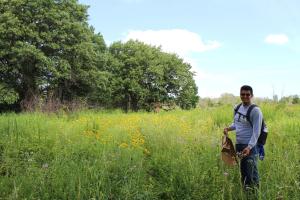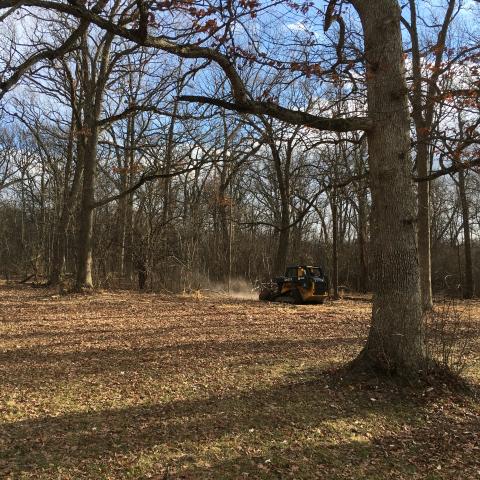Great Lakes Restoration Initiative

Read ahead to find out more about the Great Lakes Restoration Initiative (GLRI)
Great Lakes Restoration Initiative (GLRI) in Illinois

The national Great Lakes Restoration Initiative (GLRI) involves 11 federal agencies and eight states. As part of the extensive landscape effort, Illinois’ small portion of land that flows into Lake Michigan is located in the Chicago Metro area; it is highly urbanized and developed. This makes Illinois’ situation unique compared to other GLRI states-- IN, OH, MI, MN, NY, PA, and WI. Other states can use NRCS’s Environmental Quality Incentive Program (EQIP) to help local and private landowners, farmers, and producers take steps to protect the Great Lakes, but Illinois was challenged to come up with a strategy that did not involve farmers or agricultural land. The solution? Illinois NRCS worked with a ‘different’ partner in the watershed. Together, they developed an idea to help the land, solve serious natural resource issues, and assist local landowners.
The Forest Preserve District of Cook County (FPDCC), established in 1914, protects natural areas that were not developed and preserve them as open, natural spaces for future generations. Lands within this FPDCC are among the most geologically unique and biologically rich in the U.S. This ecological richness, stems in part from the geologic and climatic factors of the last glacial advance, which left behind a tapestry of diverse habitats. One of the biggest problems the Forest Preserve faces is how to preserve diverse habitats currently under attack from invasive species.
What Are Invasive Species?
According to Wikipedia: “a plant, fungus, or animal species that is not native to a specific location (an introduced species), and which has a tendency to spread to a degree believed to cause damage to the environment, human economy, or human health.” Invasive species can be accidentally transported into the new environment by humans, animals, birds or even thunderstorms.
Working together to ‘win the battle’ against invasive species that can take over and damage unique open spaces, Illinois NRCS and the FPDCC created and signed a cooperative agreement. Under this agreement, GLRI funds will help the Forest Preserve effectively remove invasive species on key acres, focusing activities on four properties: Turnbull Woods, Eggers Grove, Powderhorn Lake, and Powderhorn Prairie. These locations are popular sites used by the public, tourists, and educators.
During 2016-2017 work was conducted on approximately 74 acres throughout the preserves to remove and control invasive species and increase growth of native habitat. Using NRCS Conservation Practices such as Forest Stand Improvement, Brush Management and Prescribed Burning methods, staff and volunteers have successfully controlled invasive species that had taken over tree plantings, wetlands, pathways, and prairie communities.

The FPDCC recruited and trained volunteers to remove invasive plant and shrub species during scheduled events and field days. Volunteers not only physically removed invasive species (by hand!), they worked with kids to lead nature hikes and show children the difference between native and invasive plant and shrubs on the land. Some volunteers have gone on to secure full-time jobs with the Forest Preserve.
According to Illinois State Conservationist Ivan Dozier, “By connecting GLRI funds and guidance to install science-based conservation practices with community land managers, this partnership has had a positive impact on the land. They improved local natural resources, engaged citizens in meaningful work to enhance the natural environment, taught children a new appreciation of the outdoors—and perhaps secured ideas for a future career!”
In the end, the Lake Michigan watershed is improved and Illinois NRCS has helped Cook County secure key acres of quality native habitat where wildlife can thrive. Cook County FPD General Superintendent Arnold Randall agrees. “The projects we’ve done with NRCS have significantly reduced the threat of invasive plants at these sites, ensuring that these lands continue to shelter remarkable plants and animals and provide recreational opportunities to thousands of people each year. We have been able to effectively leverage GLRI funding, stretching limited local government resources, to accomplish significant work that benefits the people of Cook County.”
This unique partnership that started out as a way for Illinois NRCS to participate in the Great Lakes Restoration Initiative has turned into an invaluable way to fight invasive species in the Lake Michigan Watershed.
For more information, visit the Great Lakes Restoration Initiative webpage.


